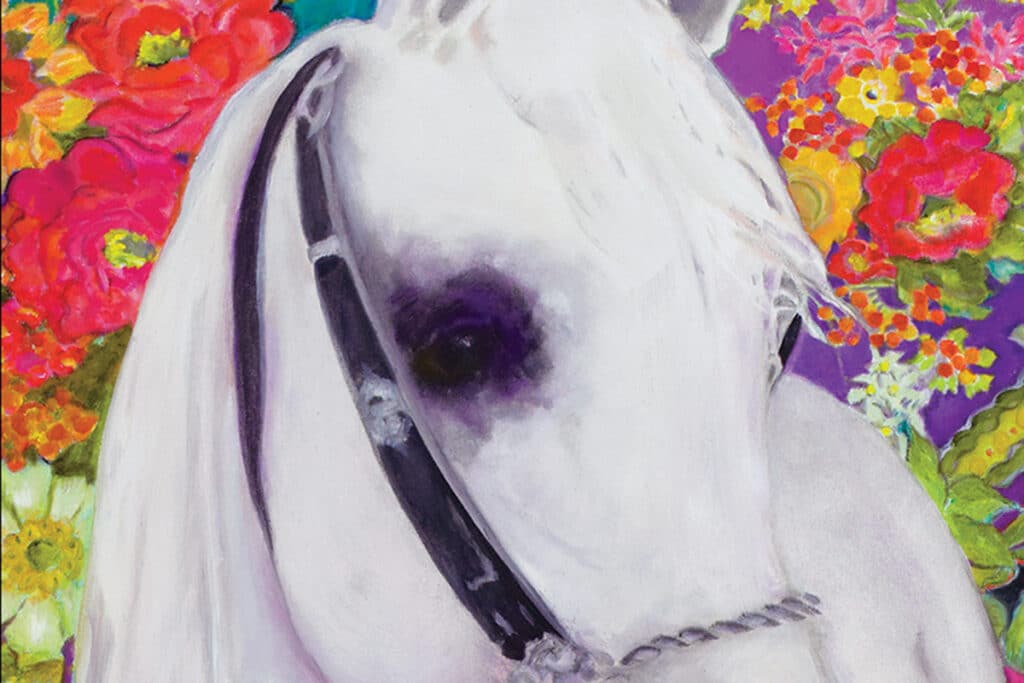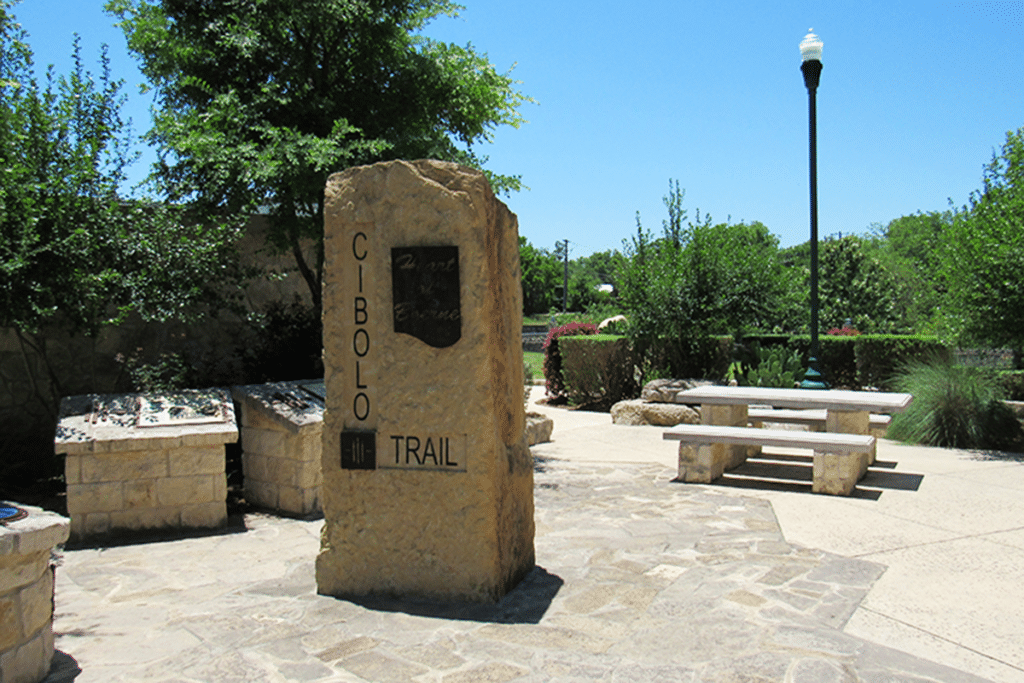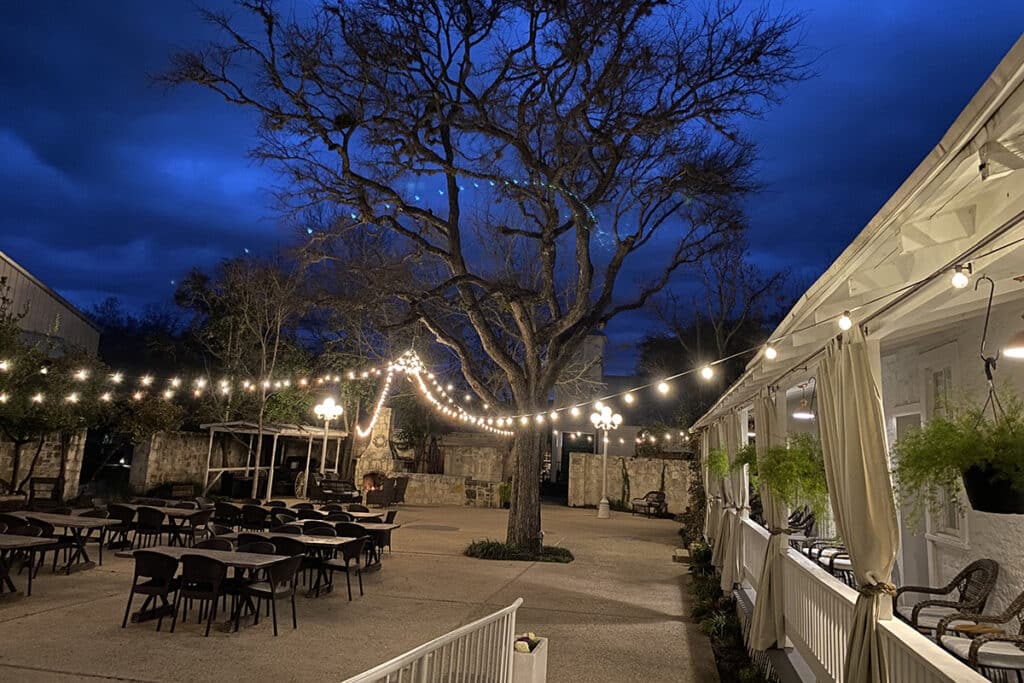The Artist Foundation (AF) of San Antonio may be barely three years old, but it has already attracted an impressive following.
In February, at its second annual fundraising event, dubbed the ArtBall, some 500 dressed-up partygoers descended on Municipal Auditorium to eat, applaud and spend money, all to show their support for the not-so-fledgling organization. Mayor Phil Hardberger and his wife, Linda, were there, as were the former and current city managers, arts organizations honchos and other prominent personalities. In fact, Linda Hardberger is the honorary chair of the foundation’s board, while the former city manager, Terry Brechtel, serves as treasurer. Among the event’s sponsors, the program listed the city’s Office of Cultural Affairs (OCA), in addition to companies, law firms and individuals. But perhaps most significantly, lots of artists volunteered their support, too. Two side rooms displayed visual art that the artists donated to be auctioned off, while another group struggled to carve original sculptures out of ice blocks in front of the building. Some creations emerged smooth and fetching as if made from molten glass, but others, unfortunately, broke into pieces. Still, it all contributed to the festive atmosphere.
So it’s hardly surprising that a few days later, when I get together with one of AF’s co-founders, Patricia Pratchett, she seems happy and relaxed. “Oh, I am very satisfied with the way it all turned out,” she says. “It’s just our second year to organize the ArtBall, and we were able to attract more patrons; lots of new people came. For the Artist Foundation to succeed we need to build support beyond the usual ‘suspects.’ We need to build awareness of the needs of individual artists.” It would seem that the organization is definitely on the right path. Founded in 2005 by Pratchett, a former USAA executive, and visual artist BettieWard, AF brings to San Antonio something that was sorely missing—financial help for the individuals who create original works of art in every field, from musical composition and choreography to painting and playwriting. The two co-founders met in 2003 through a mutual acquaintance and later served together on the Cultural Arts Board (CAB), which advises the city on arts funding. “We served on that board because we both wanted to help the community,” says Ward, who has been an advocate for the arts for years. It so happened that about that same time, the Office of Cultural Affairs launched its Cultural Collaborative initiative, envisioned as a long-term plan for the development of the city’s “creative economy.” Pratchett and Ward found themselves naturally involved in that, as well. “One of the goals of the plan was to encourage the individual artists,” recalls Pratchett. “We were all aware of the funding available to organizations, both from the city and private sources, but there was nothing for the individual. So, we said, we would like to take that on. Felix (Padron, OCA director) was very supportive.”
What happened next surprised even the enthusiastic co-founders. They threw a fund-raising party, and everyone came. It was Halloween 2004, and folks were in the mood to have fun, perhaps, but when the donations were tallied, the not-yet-formed organization found itself with a cool $20,000. “We were just stunned,” says Pratchett. They parked the money at the San Antonio Area Foundation under the Cultural Collaborative’s umbrella, and there it sat for a while. Finally, about a year later, they organized a workshop with Los Angeles consultant David Plettner on how to translate a vision into a concrete plan. Then, Pratchett undertook a huge research project to come up with the criteria for structuring a grant program. The first year out, eight grants of $5,000 each were awarded in four categories — visual, media, performing and literary arts — for a total of $40,000. Pratchett and Ward were just as elated as the recipients.
“I was thrilled,” says Pratchett, with the thrill still audible in her voice. “It was a dream come true. What is so reaffirming about this whole thing is seeing how artists react when they receive the awards. Even artists who are not getting the grant still feel honored and appreciative that there is an entity out there to support the artist.” In 2007, the sum jumped to $80,000 plus additional awards sponsored by special groups or individuals. Among the latter were the Tobin Prizes for set and costume design, the George Cortez Classical Singing Award and Lifshutz Foundation’s “Chez Bernard” Awards for emerging artists.
There’s also a $7,500 special recognition award called the Tobin Grand Prize for Artistic Excellence. Both years, the city’s Cultural Collaborative contributed to the money pool. Grants are not given on the basis of financial need, stress the cofounders. The main criterion is excellence.
GRATEFUL ARTISTS
What the grants accomplish is to buy time and sometimes equipment for the execution of an artist’s idea. As listed in AF guidelines, the projects submitted for funding must demonstrate at least one of the following characteristics: potential for artistic growth, a significant shift in the individual’s work or a challenging exploration with new materials, concepts and artistic practices. Visual artist Leigh Anne Lester, who was among the ice sculptors at the ArtBall, is a 2007 grant winner. For several years, she has been concerned about the effects of too much genetic engineering and man-made changes in our natural environment. In her art, she layers semi-transparent plant drawings on top of each other to create beautiful but sterile “hybrids,” with clear implications for our planet. The grant allows Lester to transfer her ideas into computer animation by covering the cost of both the software and a course she is taking to learn the new technique. “I just got my program and am learning how to use it,” she says. “That’s the beauty of the grant—it allows you to experiment and ultimately to realize your vision. I only received half of the grant, and I must make a report after six months to receive the rest. It’s nice that there is an expectation of progress.” For jazz performer/songwriter Bett Butler the grant provided the means to reach a broader audience with her music. Specifically, the money covered the cost for the manufacturing of 1,000 CDs of her new song collection, Myth and Fables. “I was thrilled to get the phone call telling me that I had been chosen,” she says, “but beyond that, I think the fact that the Artist Foundation exists is a tremendous thing for artists in San Antonio. I don’t know of any other place where I could have applied.”
Similar feelings are expressed by other recipients. Altogether, there were 135 submissions in 2007, and more are expected this year. The majority of applications came from visual artists, while choreographers were barely represented with only three entries. The winning entries are selected by knowledgeable judges, who change every year. With $90,000 raised at this year’s ArtBall, the call for 2008 applications will be posted on the Artist Foundation’s Web site, www.artistfound.org, in early summer.
ARTS ADVOCATES
Fund raising is obviously a big part of what AF does. Though the ArtBall is the biggest event, there are others throughout the year plus efforts to involve donors who may set up special awards in their own or a relative’s name. In addition, the organization is desperate to raise funds for basic operational expenses. Ward admits to hating the whole business of fund raising.”However, I care for our goals more than I hate fund raising,” she adds. A well-known local artist and the mother of three now-grown sons, Ward cut her advocacy teeth while her youngest son, Pendleton, was a student. As a substitute teacher in his school, she tried to convince the regular teachers that the students’ unconventional ways of expressing themselves should not be discouraged. Her son was always drawing cartoons that he dreamed of animating some day. Later, when Pen enrolled in the Northeast School for the Arts, his mom suggested some programs to broaden the students’ educational scope, but nothing came of it. “I learned a lesson,” adds Ward. “To be successful as an advocate, you have to get involved with people who have the power to make things happen.” With her artistic career established, Ward decided to practice her new approach by becoming the District 1 representative on CAB, where she served for four and a half years. That was a whole new level of responsibility without any remuneration. “It was such hard work. It took over my life for those years,” she says. “However, a lot of my current advocacy came from being on that board. I learned a lot about what we have and don’t have in San Antonio.” At one of CAB’smeetings,Ward fell into conversation with Pratchett, who also had a history of supporting the arts. Born in Cuba and reared in Panama, Pratchett has been a world traveler and arts explorer her whole life. A former dancer by avocation, she served on the Guadalupe Cultural Arts Center’s board in the past and, like Ward, had a passion for advocacy. Soon, the two women discovered that they shared the same dream — to establish a foundation that fosters new creative work.
“But there was a problem, with neither of us being wealthy,” observes Ward, wryly. “That was something rich people could talk about, not us.” Yet, as the saying goes, where there’s a will, there’s a way. Thanks to their determination and connections with the city’s power brokers, they have indeed realized not only their dream but are now helping San Antonio artists realize theirs. Yet, oddly, neither one is on AF’s board. Officially, they are only “advisory board members.” That begs the question: why? “Both of us were on the Cultural Arts Board at the time, and we didn’t want to create the appearance of a conflict of interests,” explains Pratchett. “While you are serving on that board, your organization is not supposed to receive money from the city. So we couldn’t have received any help from the Cultural Collaborative, for instance. In time, we’ll become (AF) board members. Right now, I am officially a volunteer.”
A volunteer who gives virtually all her time and considerable executive skills to the organization! Ward, however, is planning to cut back some as she is preparing for a major one-woman exhibition at Blue Star in January 2009. (“I still have to make a living,” she quips.) Both women praise the actual board members for taking their vision to heart. Today, AF operates as a subsidiary of ARTS San Antonio and has one part-time paid executive consultant, Elizabeth Ciarfeo. Ever the passionate advocates, the two women have also had a hand in the birthing of Luminaria, the new city-wide, one-day celebration of the arts that took place March 15. In fact, on that day, Ward— who chaired the Luminaria selection committee — threw a lunch party for a small crowd of activists and arts writers in her studio-residence. The Hardbergers were again among the guests. Ward sang a beautiful jazz song to the mayor to thank him for his support of the arts in general and of Luminaria in particular. Obviously, no one engages so deeply with a cause without thoroughly believing in it. And these two visionary women are certainly believers. “Artists tell us how healthy our culture is,” says Ward. “Just look at the greatest cultures in history; the arts were always very strong. Now we live in a country that almost killed the NEA (National Endowment for the Arts). That’s why it’s so important to support the arts. It’s almost a barometer of how well we are doing. And we need to listen to what artists are telling us.”
Author: Jasmina Wellinghoff
Photographer: Janet Rogers




